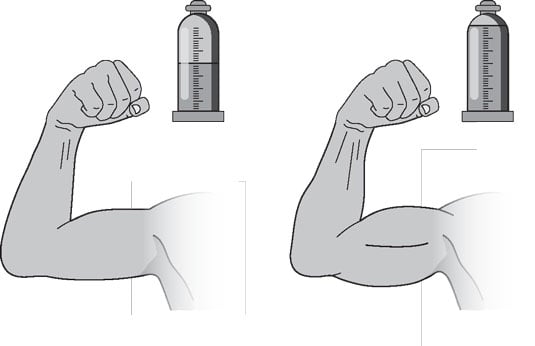Looking at what impacts how insulin works
The two main body tissues that are sensitive to the effects of insulin are your muscle cells and adipose, or fat, tissue. Obesity is associated with an accumulation of stored fat inside both muscle and adipose cells. Muscle is an important storage site for excess glucose and carbohydrates. But when your muscles get filled with excess fat or carbohydrates, they become less sensitive to insulin, and your pancreas must release more insulin to have the same effect (or if you need insulin, you'll need to take higher doses).A third tissue also responsive to and affected by insulin is your liver. This organ is responsible for making sure you have enough glucose in your blood at all times. It can both store and release glucose to keep levels constant.
In some people with diabetes, the liver becomes insulin resistant and releases too much glucose, especially overnight when they go for long periods without eating. Gaining a lot of excess fat within your abdomen (called visceral fat) and within the liver itself can contribute to an insulin resistance there.
Interestingly, your fat cells usually remain largely responsive to insulin even when your muscle cells become resistant, and much of your excess blood glucose can be converted into storage fat. When the carbohydrates you eat end up spiking your blood glucose, the rise causes the release of more insulin and ultimately more fat storage in fat cells and likely your liver.
Being active helps reverse insulin resistance in your liver and reduces the amount of metabolically bad, visceral fat stored inside your abdomen.
Revving up your insulin action
Think of your muscles as a glucose tank, a place to store the carbohydrates that you eat and don't need to use right away, as shown in Figure 2-1. When you exercise regularly, you use up glycogen stored in the muscles and have room to put carbohydrates back in after you eat. If the glycogen stores are already full because you've consumed too many carbohydrates or exercised too little, your muscles can't store more carbohydrates after you eat, and you're insulin resistant. This state is reversible with exercise. The muscle glucose tank.
The muscle glucose tank.To raise your insulin sensitivity, keep your muscle glucose tank as big as possible (by doing resistance and other training regularly) and partway empty (by being active on a daily basis, or at least every other day).
Physical activity isn't the only factor that can improve your insulin action, however, and most of them you have some control over. Addressing these factors can raise your body's insulin action and consequently reverse prediabetes or improve diabetes management.Factors that can boost insulin action in your muscles include the following:
- Regular aerobic, resistance, interval, and other types of exercise
- Tighter blood glucose management
- Increase in overall muscle mass
- Loss of body fat, particularly visceral fat and extra fat stored in the liver
- Intake of more dietary fiber, less manufactured trans fat, and fewer highly refined foods
- Daily consumption of a healthy breakfast
- Lower daily caffeine intake
- Reduced levels of circulating free fatty acids (fat in blood)
- Reduction in mental stressors (depression, anxiety, stress, and so on)
- Better control of physical stressors (illness, infection, exhaustion, and so on)
- Adequate sleep (seven to eight hours a night for most adults)
- Effective treatment of sleep apnea
- Use of insulin-sensitizing medications
- Reduction in low-level, systemic inflammation
- Decrease in circulating levels of cortisol
- Increased testosterone levels in men
If you're trying to improve your insulin action (or lose weight) and your body releases a large amount of insulin in response to the carbohydrates you eat, you may benefit from eating a food plan that is moderate in carbohydrate. Talk to a registered dietitian or nutritionist about the best plan for you.

